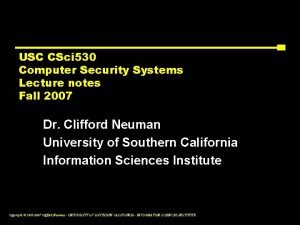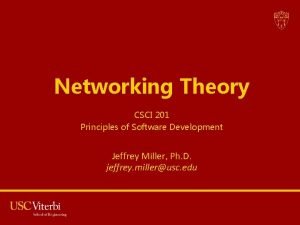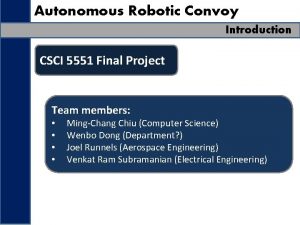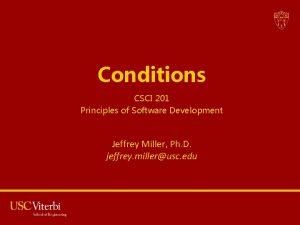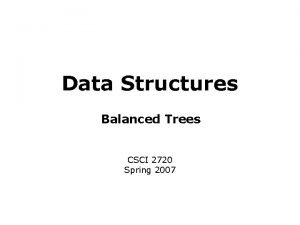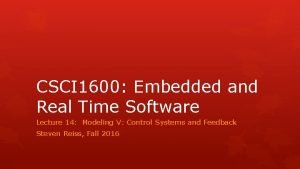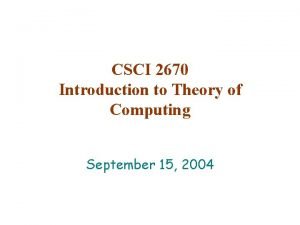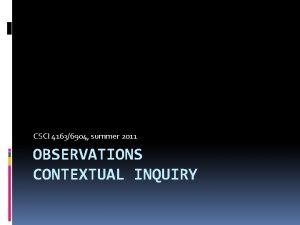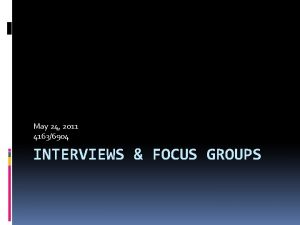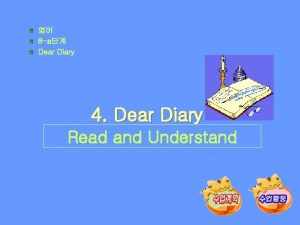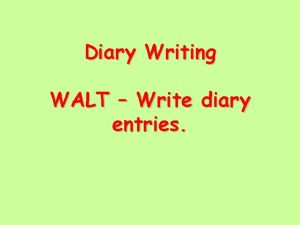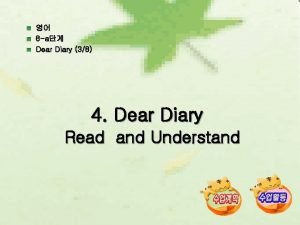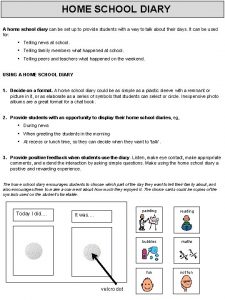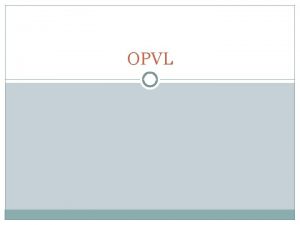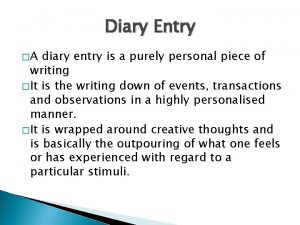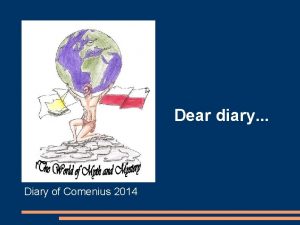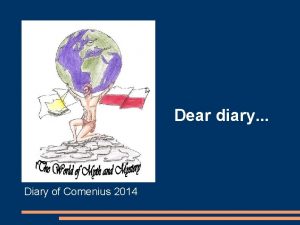CSCI 41636904 Summer 2011 DIARY STUDIES Diary studies













- Slides: 13

CSCI 4163/6904, Summer 2011 DIARY STUDIES

Diary studies… Participants collect data about events As they happen In the context of the event (in situ) Can think of like a small, longitudinal questionnaire Often used to prompt interview discussion (similar to observations in a contextual inquiry) Can help understand rare/infrequent events

Data collection methods Survey style forms Paper (little training required, but hard to monitor) Online entry forms Google docs Photographs, video Digital/disposable camera, mobile phone Audio recording Voice recorder, mobile phone Aggregating data online Blogs (text, audio, video) , Twitter Rich and timely information

Type of data recorded When Date/time Duration Activity/task What Activity/task feelings/mood Context (environment/setting)

When is data recorded? Randomly In response to prompts At specific intervals Based on activity

General types of diary studies Unstructured Ask participants to report on everyday activities Trying to elicit general themes Structured Ask participants to report on everyday activities by answering specific questions about the activity Combination of question types Can also be used as a form of usability tests and problem reports Ask them to complete a task and report results, identify bugs, etc.

Variations based on purpose Feedback (now) Elicitation (later) Record everything in situ Record aspects or triggers of an activity No follow up Focus on the “what” data Follow up with an interview to gain more information Mostly structured Data captured is used to elicit the Can be burdensome on “why” and the how” participants and Mostly unstructured researchers Can be problems with participant recall

Cultural Probe Diary study++ Used to not only record activities, but capture more of “felt life” Stimulate thought as well as capture experiences http: //www. hcibook. com/e 3/casestudy/cultural-probes/ - pack contained a small disposable camera and a listening glass that participants used to listen at walls and doors and write what they heard. It also contained a small solid state recorder packaged in a sleeve that said 'dream recorder'. Was used by designers at the Royal College of Art, London, to study the way people see their own homes. The results were used to enable designers to get a 'feel' of the meaning of home for many people. Experience sampling method (measure feelings, moods) Technology Probes (prototypes, experimental artifacts)

Coordination Challenges Keeping participants on track Periodic reminders Feedback about the level of detail in responses Progressive incentives, surprise incentives/gifts (may or may not be allowable by BREB) Adapting to changes Start analysis as soon as first results arrive May need to re-evaluate the diary format if the data being captured is not what you expected!

Advantages Time efficient for researchers Lower cost than direct observations Can have a broad geographic distribution Supports contextual reports over time Natural environment Can give rich data about contexts of use

Disadvantages Participant fatigue Missed responses (frequency data is generally unreliable – lower bound) Study drop outs “after the fact” reporting to catch up Behaviour adjustment Participants need reminders Can be expensive for long durations Volume of collected data can be overwhelming

Study protocol Introductory letter Consent form Needs to motivate their participation Very specific instructions Can be helpful to give an example of a filled out form (take care not to prime/limit) Diary form / collection aids

Forms of analysis Track temporal patterns Look for semantic patterns in visual data Combine with interview analysis

